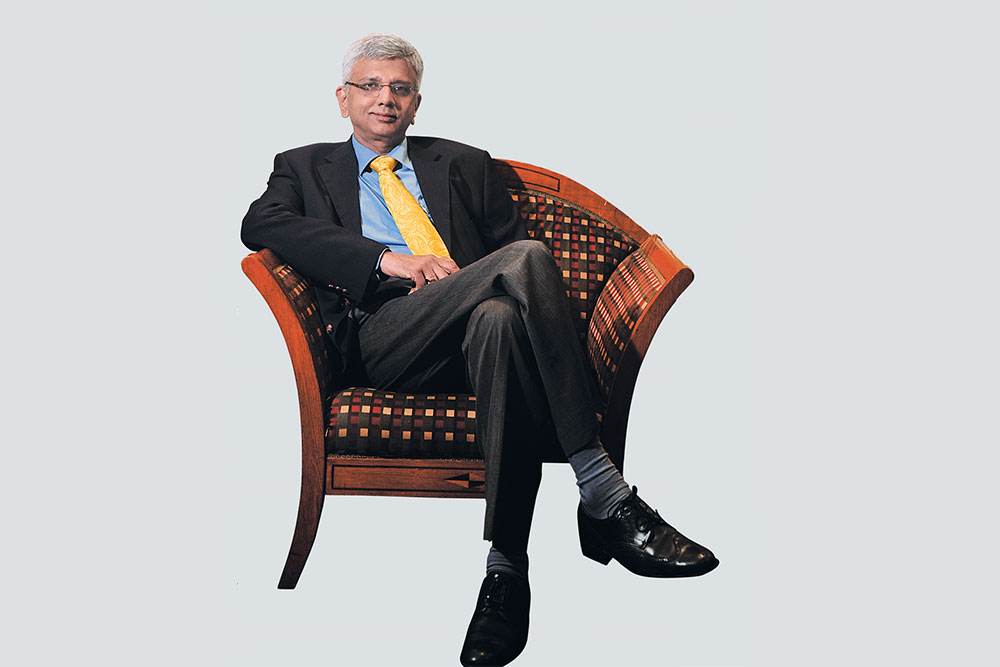 Shekhar Gupta while delivering the first AAAI-Subhas Ghosal Memorial Lecture recently observed that a generation gap is no longer defined in terms of decades. If you were to dig deeper into the classic definition of 17 years as the generational divide, he said, we may find three generations. So someone who is just about five or six years younger than you may have a different world view from yours. That is not necessarily a bad thing, the learned journalist opined.
Shekhar Gupta while delivering the first AAAI-Subhas Ghosal Memorial Lecture recently observed that a generation gap is no longer defined in terms of decades. If you were to dig deeper into the classic definition of 17 years as the generational divide, he said, we may find three generations. So someone who is just about five or six years younger than you may have a different world view from yours. That is not necessarily a bad thing, the learned journalist opined.
Almost as an ode to this observation, Dheeraj Sinha has come out with his second book India Reloaded, just about five years after his first book Consumer India was published. Why a book so soon after the first one, you may wonder. Perish the thought. In his new book, Sinha has focused exclusively on the market and consumer trends of the past five to six years. And the book makes for a breezy read and a quick review of the latest happenings in our exciting market.
The book opens with a quick update on the consumer market as it stands today. The author strongly suggests that instead of trying to indulge in ‘mass market thinking’ brands will be better off with an ‘upgrade market thinking’. One of the key lessons Sinha talks about is the need for a brand to sound like a leader. If you are a newcomer and you cannot own the category, try and create one, he exhorts. Giving the example of Sensodyne he proves his case. So even a challenger brand needs to espouse leadership values.
The strong bias towards the author’s day job surfaces when he observes, “Advertising by a brand is seen as its commitment to the market and signifies its scale of operation”. As consumer and channel partners become more media-savvy, this holds true even more today than it did, say a decade ago, when I was asked in a remote village in Bihar “Iska ad TV mein aayega kya?”.
The book makes a strong case for marketers to understand and communicate with the youth of India in a more nuanced manner. Quite rightly Sinha observes that brands fall into two buckets — those who present youth as empty-headed funsters and the other who appeal to the rather fringe danger-loving, eve-teasing minority. The comment “… there is nothing wrong in casting the youth in a confetti world, just that it is an opportunity lost to say something real about their lives” is worth remembering.
The other significant example presented is against the much celebrated jugaad way of doing things in India. Making a point of pulling up brands for poor service, Sinha says that ‘Jugaad is an enemy of good service’. As you breeze through the 198-pages you will come across numerous brands that have occupied media attention over the last five years. Brands such as Nano, Flipkart, Mary Kom, Narayana Hrudalaya, Kingfisher Airlines, AAP, IIPM and IPL get analysed. Some in more detail than the others.
Given the focus on the last five years, I suspect that Sinha is already looking forward to his next book. But I only wish he had supported some of his observations with other books that have appeared on the Indian horizon over the last five to seven years. That would have given the arguments presented a stronger foundation. A much needed ‘further reading’ section was also missing at the end of the book. The author Dheeraj Sinha is young, bright and has taken the courage to put down his thoughts and ideas into a highly readable book. Strongly recommended indeed.











